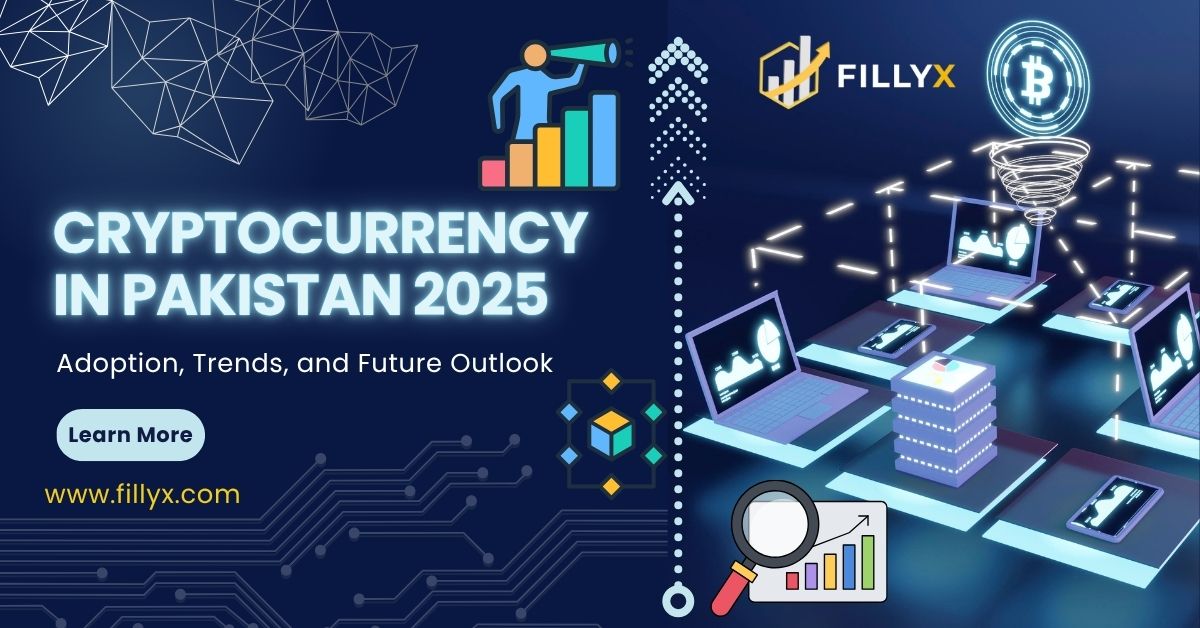The Rise of Cryptocurrency Adoption in Pakistan
Economic Challenges and Wealth Preservation:
Persistent inflation and currency devaluation have pushed many Pakistanis to seek alternatives to traditional banking. Cryptocurrencies, particularly stablecoins like USDT and USDC, offer a hedge against economic volatility, enabling citizens to preserve wealth and engage in cross-border transactions with lower costs.
Remittances and Cross-Border Payments:
Pakistan is one of the top recipients of remittances globally, with inflows exceeding $30 billion annually. Stablecoins have transformed the remittance landscape, delivering faster and more affordable solutions than traditional methods. For instance, platforms like Fillyx enable seamless peer-to-peer (P2P) transactions, reducing reliance on costly intermediaries.
Freelancing Economy:
Pakistan boasts one of the largest freelancing economies, with platforms like Upwork and Fiverr being popular among its youth. Cryptocurrencies provide freelancers with a way to receive payments directly, bypassing high banking fees and currency conversion costs.
Technological Innovation:
The rise of blockchain technology and decentralized finance (DeFi) has captured the imagination of Pakistan’s tech community. From Bitcoin mining to AI-driven data centers, the country is leveraging its surplus electricity (2,000 MW allocated for crypto-related activities) to build a robust digital ecosystem.
Regulatory Reforms: A New Era for Crypto in Pakistan
In 2025, Pakistan underwent a historic shift from crypto skepticism to proactive regulation, marking a turning point for the industry. The establishment of the Pakistan Crypto Council (PCC) and the Pakistan Digital Assets Authority (PDAA) under the State Bank of Pakistan (SBP) has provided a structured framework for digital asset adoption.
Taxation Framework: Starting July 1, 2025, a 15% Capital Gains Tax (CGT) applies to profits from crypto sales, while income from mining or staking is taxed at regular income rates (5-35%). This clarity has boosted investor confidence.
Strategic Bitcoin Reserve: Pakistan’s announcement of a Strategic Bitcoin Reserve, inspired by the United States, signals its ambition to become a regional crypto hub. This action, paired with the provision of extra electricity for Bitcoin mining, reflects the government’s commitment to nurturing innovation.
Key Trends Shaping Pakistan’s Crypto Landscape in 2025
The cryptocurrency market in Pakistan is evolving rapidly, driven by global and local trends. Here are the key trends shaping the industry in 2025:
1. Stablecoin Dominance
Stablecoins like USDT and USDC dominate Pakistan’s crypto market due to their stability and utility in trading and remittances. In 2024, the global stablecoin market grew by nearly $50 billion, and Pakistan’s adoption reflects this trend. Platforms like Fillyx facilitate stablecoin transactions, enabling users to transfer funds across borders with minimal fees, making them a preferred choice for freelancers and small businesses.
2. Institutional Adoption
While grassroots adoption is strong, institutional interest is also rising. Major banks and fintech firms in Pakistan are exploring crypto custody solutions and tokenized assets. The global trend of institutional adoption, driven by firms like BlackRock, is influencing Pakistan’s financial sector to integrate digital assets into traditional systems.
3. DeFi and Blockchain Interoperability
Decentralized finance (DeFi) is gaining traction in Pakistan, with 55.8% of regional transaction volume in Central and Southern Asia attributed to DeFi platforms between July 2022 and June 2023. This trend is particularly relevant for Pakistan’s tech-savvy youth, who are experimenting with DeFi protocols and decentralized applications (dApps).
4. Tokenization of Real-World Assets (RWAs)
The tokenization of assets like real estate, commodities, and bonds is emerging as a major trend globally and in Pakistan. Tokenization transforms physical assets into digital tokens, improving liquidity and ease of access. Pakistan’s real estate sector, a significant part of its economy, is ripe for tokenization, with platforms exploring ways to fractionalize property ownership.
5. AI and Blockchain Integration
The convergence of artificial intelligence (AI) and blockchain is transforming Pakistan’s crypto landscape. AI-based trading algorithms and predictive tools are enhancing accessibility for individual crypto investors. Additionally, AI agents are being developed to manage cross-chain transactions, enhancing efficiency and user experience.
Future Outlook: Pakistan as a Crypto Hub
Looking ahead, Pakistan is poised to become a regional leader in cryptocurrency adoption. By 2027, blockchain is expected to store 10% of global GDP, and Pakistan’s strategic initiatives, such as the Bitcoin Reserve and PDAA, align with this vision.
The rise of stablecoins, DeFi, and tokenized assets will likely drive further adoption, particularly among freelancers, small businesses, and unbanked populations. Additionally, partnerships with global crypto leaders, such as Binance’s advisory role in Pakistan, could accelerate innovation and foreign investment.
However, success hinges on addressing challenges like financial literacy and infrastructure development. Public-private collaborations, educational campaigns, and investments in blockchain technology will be essential to sustaining growth.
Conclusion about Cryptocurrency in Pakistan 2025
Frequently Asked Questions (FAQs)
Yes, cryptocurrencies are legal in Pakistan as of 2025, regulated by the Pakistan Crypto Council (PCC) and Pakistan Digital Assets Authority (PDAA). The State Bank of Pakistan has clarified that cryptocurrencies were never banned but now operate within a legal framework with AML and CFT compliance.
As of July 1, 2025, a 15% Capital Gains Tax applies to profits from selling cryptocurrencies. Income from mining or staking is taxed at regular income rates, ranging from 5% to 35%.
Stablecoins like USDT and USDC are popular due to their stability, making them ideal for remittances, trading, and wealth preservation amidst economic volatility. They offer low-cost, fast transactions compared to traditional banking.
Pakistan has allocated 2,000 MW of surplus electricity for Bitcoin mining and AI data centers, alongside establishing a Strategic Bitcoin Reserve to promote blockchain operations.
Risks include market volatility, lack of financial literacy, potential scams, and evolving global regulations. Investors should conduct thorough research and use secure platforms.






